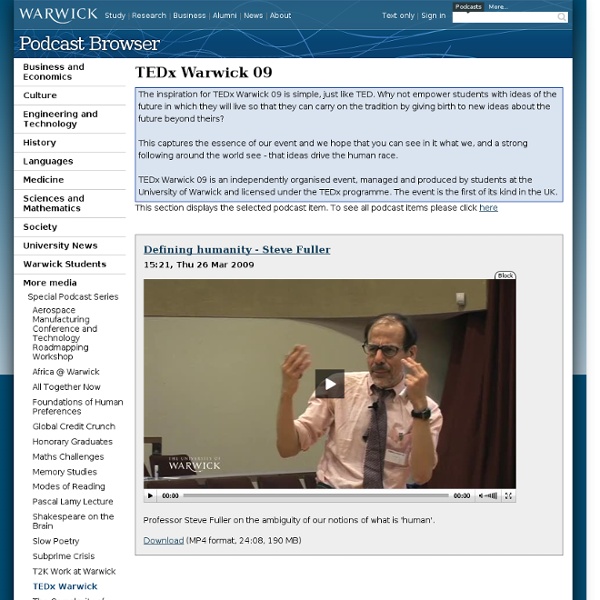



The Human Element Douglas E. Hersh’s close crop of auburn hair and neatly trimmed goatee are clearly visible in an expandable window on my desktop. So are his light tweed blazer and matching tie. On a table behind his desk sits a purple orchid, lending color to his office -- 2,600 miles away from mine. The technology that allows me to see Hersh’s face as he speaks to me is not new. But Hersh, dean of educational programs and technology at Santa Barbara City College, believes it may hold the key to solving an old problem that has plagued distance education since its beginnings: the retention gap. A growing body of research has all but obliterated the notion that distance education is inherently less effective than classroom education. But Hersh believes there is another major factor driving the gap between retention rates in face-to-face programs and those in the rapidly growing world of distance education: the lack of a human touch. For Hersh, engagement goes hand-in-hand with audio-visual communication.
EDC MOOC News | from the E-learning and Digital Cultures MOOC The Human Touch In 1922 Thomas Edison proclaimed, “I believe the motion picture is destined to revolutionize our educational system and that in a few years it will supplant largely, if not entirely, the use of textbooks.” Thus began a long string of spectacularly wrong predictions regarding the capacity of various technologies to revolutionize education. What betrayed Edison and his successors was an uncritical faith in technology itself. This faith has become a sort of ideology increasingly dominating K-12 education. In the past two decades, school systems, with generous financial and moral support from foundations and all levels of government, have made massive investments in computer technology and in creating “wired” schools. The goal is twofold: to provide children with the computer skills necessary to flourish in a high-tech world and to give them access to tools and information that will enhance their learning in subjects like mathematics and history. The Need for Firsthand Experience
Episode 103: Founder of 'UnCollege' Describes His Alternative to Campus - Tech Therapy Dale J. Stephens, who was home-schooled as a kid, argues that people can direct their own college-level learning without ever setting foot on a traditional campus. Now he is faced with spelling out what his alternative might look like—including running an admissions process and establishing a $12,000 “gap year” that teaches students how to teach themselves. Mr. Stephens explains his vision to the Tech Therapy team, who ask how he plans to avoid the trappings of institutions that he criticizes. Links discussed in this episode: UnCollege | Hacking Your Education: Ditch the Lectures, Save Tens of Thousands, and Learn More Than Your Peers Ever Will Each month The Chronicle’s Tech Therapy podcast offers analysis of and advice on what the latest gadgets and buzzwords mean for professors, administrators, and students. Return to Top
the double bind of open education #edcmooc For week two of the eLearning and Digital Culture MOOC, one of the assignments is watching Gardner Campbell speak at Open Ed 12 from last October. Here's the video: One of Gardner's key points of reference is Gregory Bateson, specifically Ecologies of the Mind. This is perhaps not so far off from what Gardner is seeking in his use of Bateson: open education as a "continuous, self-vibrating region of intensities." The central double-bind for digital literacy education–whether it is FTF, traditionally online, or open and online–is between the demand to reinvent/be creative and the expectation of meeting traditional standards. I don't wish to romanticize open online education as Deleuzian plateau. So, for example, a writing or digital composing MOOC is easy to imagine. This is the great double bind of open education: to reorient prospective students toward an open-ended education and away from the symbolic capital promised by higher ed.
Evolutionary tinkering in revolutionary times “AMERICA’s university-based teacher preparation programs,” declared US secretary of education Arne Duncan in a much-quoted remark, “need revolutionary change — not evolutionary tinkering.” We could use a revolution here too. In fact, we know what it could look like as well as knowing that it’s needed. But it seems almost certain that we’re not going to get it. The need is almost scandalously obvious. Principals agree with them. How bad is that? Everyone in and around teacher education knows that there is a problem, and many are trying to do something about it. Serious money provided under the agreement provoked a hive of activity down on the ground, often guided by developments in Britain and the United States, and often complemented by state-level reviews and strategic plans. The former revolves around extended “practicums” in “school centres for excellence” supervised by “teaching fellows,” all operating under “school–university partnerships.” This is a spectacularly bad decision.